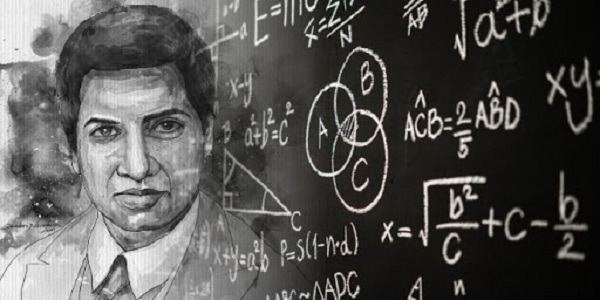National Mathematics Day: Why 1729 is a special number?
Srinivasa Ramanujan was a person who really knew Infinity or knew more than infinity. He contributed theorems and independently compiled 3,900 results (mostly identities and equations).
Total Views |
Srinivasa Ramanujan was a person who really knew Infinity or knew more than infinity. He contributed theorems and independently compiled 3,900 results (mostly identities and equations). However, inquisitive minds and those dabbling in mathematical science would also know him for the Hardy-Ramanujan number.

Many were completely novel; his original and highly unconventional results, such as the Ramanujan prime, the Ramanujan theta function, partition formulae, and mock theta functions, have opened entire new areas of work and inspired a vast amount of further research. Nearly all his claims have now been proven correct.
The Ramanujan Journal, a scientific journal, was established to publish work in all areas of mathematics influenced by Ramanujan, and his notebooks—containing summaries of his published and unpublished results—have been analyzed and studied for decades since his death as a source of new mathematical ideas.
As late as 2011 and again in 2012, researchers continued to discover that mere comments in his writings about "simple properties" and "similar outputs" for certain findings were themselves profound and subtle number theory results that remained unsuspected until nearly a century after his death. He became one of the youngest Fellows of the Royal Society and only the second Indian member, and the first Indian to be elected a Fellow of Trinity College, Cambridge.
Having said that, his writings about "simple properties" and "similar outputs" turned out to be fascinating discoveries. One of them was the Hardy-Ramanujan number. It is named such after an anecdote of the British mathematician G.H. Hardy who had gone to visit S. Ramanujan in hospital. The anecdote is a part of Ramanujan's biography 'The Man Who Knew Infinity' by Robert Knaigel.
Hardy quipped that he came in a taxi with the number '1729' which seemed a fairly ordinary number. Ramanujan said that it was not. "He must have thought about it a little because he entered the room where Ramanujan lay in bed and, with scarcely a hello, blurted out his disappointment with it. It was, he declared, 'rather a dull number,' adding that he hoped that wasn't a bad omen. 'No, Hardy,' said Ramanujan, 'it is a very interesting number. It is the smallest number expressible as the sum of two [positive] cubes in two different ways' ".
1729, the Hardy-Ramanujan Number, is the smallest number which can be expressed as the sum of two different cubes in two different ways.
1729 is the sum of the cubes of 10 and 9 - a cube of 10 is 1000 and a cube of 9 is 729; adding the two numbers results in 1729.
1729 is also the sum of the cubes of 12 and 1- a cube of 12 is 1728 and a cube of 1 is 1; adding the two results in 1729.
However, similarly, there are more fascinating discoveries about it. Here positive numbers are taken as the smallest number considering negative cubes also will be-
91 is the sum of the cubes of 6 and -5 i.e. the cube of 6 is 216 and the cube of -5 is 125; adding the two numbers results in 91.
91 is also the sum of the cubes of 4 and 3 i.e. the cube of 4 is 64 and the cube of 3 is 27; adding the two numbers results in 91.
Though the Ramanujan number is not his greatest combination, it is certainly a fascinating discovery that is easiest to remember among all of his discoveries. He was fascinated with numbers and made striking contributions to a branch of mathematics partition numerous, the study of partitions of numbers.
